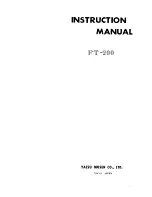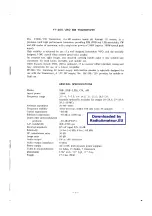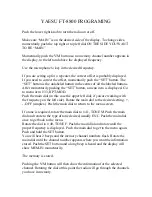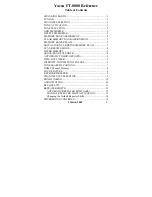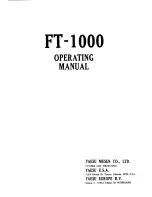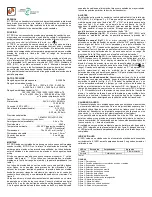
MDS 05-3624A01, Rev. B
OEM Series™ I/O Guide
19
Thus, an eight-digit hexadecimal number can classify up to 32 events as
alarm triggers for the alarm output status line. See
for a list of the event codes and their hex values. The hex value of the
mask is simply the sum of the hex values of the event codes
corresponding to the alarm triggering events.
BAUD [xxxxx abc]
This command sets (or displays) the communication attributes for the
DATA INTERFACE
port.
The first parameter (
xxxxx
) is baud rate. Baud rate is specified in
bits-per-second (bps) and must be one of the following speeds: 1200,
2400, 4800, 9600, or 19200.
The second parameter of the
BAUD
command (
abc
) is a three-character
block indicating how the data is formatted:
a
= Data bits (7 or 8)
b
= Parity (N for None, O for Odd, E for Even)
c
= Stop bits (1 or 2)
The factory default setting is 9600 baud, 8 data bits, no parity, 1 start bit,
and 1 stop bit (Example:
9600 8N1
).
NOTE:
7N1, 8O2, and 8E2 are invalid communication settings and are
not supported by the transceiver.
CTS [0–255]
The
CTS
(clear-to-send) command sets or displays the timer value
associated with the CTS line response. The command parameter ranges
from 0 to 255 milliseconds.
For DCE operation (see
DEVICE
command), the timer specifies how long
to wait after the RTS line goes high, before the radio asserts CTS. A
CTS
value of zero asserts the CTS line immediately after the RTS line goes
high.
For CTS Key operation (see
DEVICE
command), the timer specifies how
long to wait after asserting the CTS, before data becomes available. A
timer value of zero means that data is available as soon as received
CTSHOLD [0–60000]
For CTS Key operation (see
DEVICE
command), the
CTSHOLD
command
sets or displays the timer value associated with the end of a CTS line
response. The timer value specifies the length of time that CTS remains
active following the last byte from the RXD pin of the
DATA INTERFACE
port. The time is in milliseconds. The default value is 0, which means
that CTS drops immediately after the last byte.
































